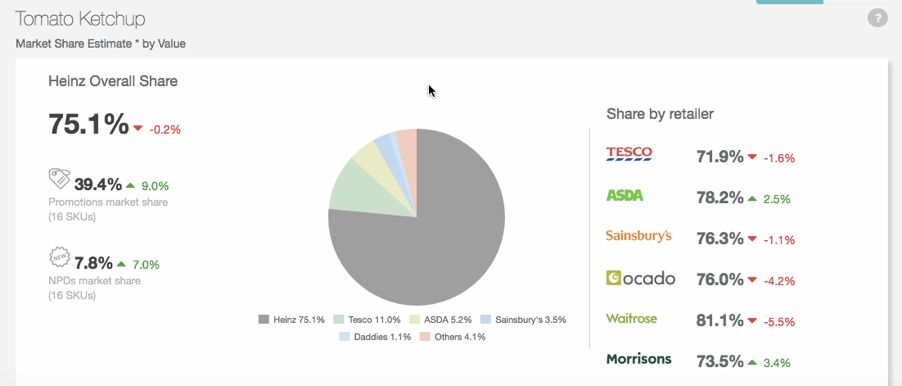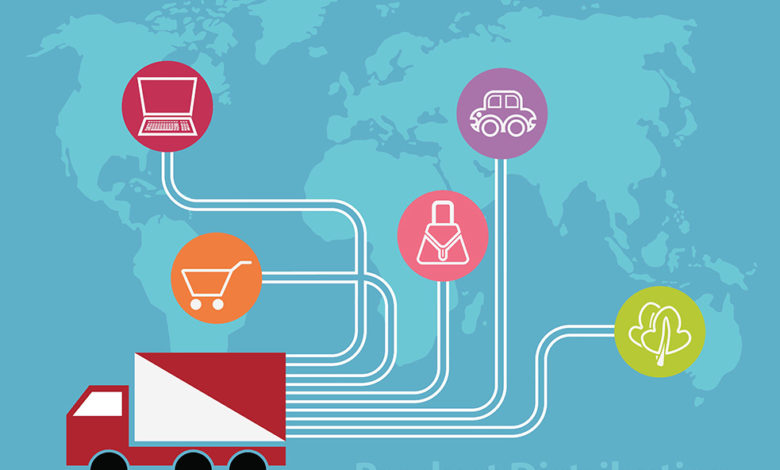The giants of the fast moving consumers goods (FMCG) sector have faced a challenging few years. Kraft Heinz has been among those hitting the headlines for the wrong reasons. So, how will it meet the challenge of changing market dynamics? Matt Boffey explores its current predicament, and the three biggest digital opportunities which will be key to the organisation's growth over the coming years.
All global consumer goods companies are facing up to changing consumer tastes and slowing growth. As Heinz UK announces new innovation plans and Unilever continues its acquisition spree, we’ve analysed the three biggest opportunities to accelerate the performance in packaged goods.
In 2016, the revenues of large fast-moving consumer goods (FMCG) companies – across food, soft drinks and household products – grew at their slowest rate since 2009. Global titans like Nestlé, Kellogg’s and Procter and Gamble have been amongst the worst hit.
Kraft Heinz is one of the big players hitting the headlines for the wrong reasons. It recently announced lower-than-expected figures for 2017, with company stock declining 33% over the course of the year and a $36 billion drop in market value. This follows on from Kraft Heinz’s failed £115bn takeover bid of Unilever, which the British-Dutch company described as a ‘near-death experience.’
FMCG growth: ‘Build and Buy’ vs ‘Cut and Conserve’
It’s clear the two companies have contrasting growth strategies. While Unilever’s strategy could be characterised as ‘Build and Buy’, Kraft Heinz’s historical approach has been ‘Cut and Conserve’.
In terms of ‘building’, Unilever launched five new brands in the Personal Care category in 2017 alone, including Hijab Fresh (a body care range for Muslim women).

In terms of ‘buying’, Unilever has identified the acquisition of digital native and premium brands as central to its growth strategy. Since 2015, they have spent €9bn on 19 acquisitions, including two companies that market online and sell online, to people who buy online.
These new propositions and acquisitions demonstrate Unilever’s expertise in addressing the needs of specific and growing global consumer groups.
In contrast, Kraft Heinz has developed a reputation for driving profit through efficiency gains and cost-cutting in recent years, focusing its efforts on making the most of its iconic brands, like Tomato Ketchup and Baked Beans.
However, with the takeover bid collapsing, there are ambitious plans at the FMCG giant to raise their game and better compete with the likes of Unilever.
The 3 biggest digital opportunities for Heinz
For Heinz UK, changing market dynamics in the FMCG sector pose a challenge, but also provide a wealth of new opportunities to drive growth. We’ve identified the three biggest digital opportunities that will be key to the organisation’s growth moving forward:
1. E-commerce: driving home Heinz’s advantage
Global FMCG online sales are on the rise and the UK market has seen dramatic change, boasting the world’s second highest proportion of groceries bought online. It’s therefore essential that Heinz UK has a strong e-commerce offering.
Over the last year, Heinz’s ketchup has performed well in e-commerce. This is despite the threat of own-label and new offerings from branded competitors. The average price of Heinz’s ketchup range is over double the price of a supermarket own brand product. Yet, as the data shows, Heinz has maintained strong market share by value:

Image: Heinz Tomato Ketchup’s e-comm market share by value in UK retailers. Source: mySupermarket
This strong performance is down to executing well in e-commerce: dominating retailers’ page listings; getting into customers’ Favourites lists; and using smart merchandising.
Heinz’s strong execution on third party retailer sites is something it will need to replicate across its wider portfolio if it is to maintain the dominance of its well-known power brands.
2. Product and marketing innovation: scaling new offerings
The distinct attitudes of millennial consumers (22 to 37 year olds) are growing in influence, with large FMCG companies struggling to adapt. Research shows that this audience is more environmentally aware, more health conscious and feel they can make a difference to the world through their choices. Smaller FMCG brands, whose authentic propositions and brand stories appeal to these values, are benefiting from these consumers coming into their peak earning years, at the expense of the big FMCG companies.
Heinz needs to consider these new consumer behaviours and adopt a new marketing model to reach and appeal to millennials.
For inspiration, Heinz would do well to look at baby food brand Ella’s Kitchen. This is a brand that has successfully driven growth through digital marketing, using content and influencer advocacy to drive demand. Their strategy is to share knowledge and advice with parents through relevant online channels, whether it be guidance on weaning through the app; or interactive parenting content on their website.
They also engage heavily with bloggers, winning over influencers that can build trust amongst parents.
To adapt to the expectations of demanding millennials, Heinz would benefit from a look at Ella’s playbook when launching new brands and products.
3. Direct-to-consumer: experimenting with new business models
Direct to consumer (D2C) is a huge digital opportunity, cutting out third party retailers altogether and selling products via a brand’s own channels. A successful D2C offering can mean higher profit margins and improved ownership of customer data than selling solely via a third party.
Often there’s a level of upfront spend needed to make the business model work, including increased costs of acquisition, web hosting and fulfillment which make it a risky option and can put FMCG brands off. However, two areas where FMCG players have had success is with the high margins of super-premium offerings and the cumulative value of subscription services.
Unilever’s high-end condiment brand Maille is one example of a super-premium offering. It has capitalised on its considerable heritage with a direct sales website offering gourmet flavours and gift sets not available elsewhere.
In terms of subscription offerings, there’s a notable rise in meal kits like HelloFresh and Gousto. This direct to consumer approach works and is certainly profitable. Especially when coupled with an easy-to-navigate website and a seamless, personalised customer experience.
Heinz UK are well placed to create an offering in this space. They already partner with Weight Watchers to produce their ‘WW for Heinz’ ready meals. Its range of recipes, diet plans and nutritional shopping books are seen as a day-to-day assistant for many dieters. Creating a subscription offering with this audience could be valuable and give the audience what they need to stay on track.
Going for growth in FMCG
Rapidly changing expectations, particularly amongst younger consumers, means the FMCG landscape is tougher than ever. Heinz UK are making positive steps in response to these challenges and will need to make good on their ambitions in order to accelerate their growth.
Strong e-commerce execution will be a key factor moving forward. To drive improved performance Heinz must start experimenting with innovative products, marketing techniques and business models.
It will take more than cost-cutting to cut the mustard (or ketchup).
Matt Boffey is co-founder and director of consulting at Great State. A specialist in keeping brands relevant by improving the experience they offer, Matt created the ‘Good Food Deserves Lurpak’ strategy which has now been around for over a decade and powered the brand to No 1 in its market. He also authored the plan for Adidas’ activation of its sponsorship of the London 2012 Olympics.







Leave your thoughts